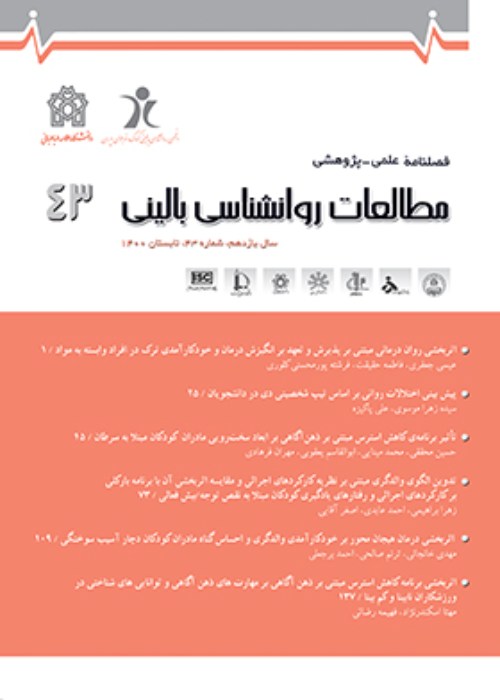A Cross-Cultural Study about Positive and Negative Emotions and Its Relation to Health and Well-being
Author(s):
Article Type:
Research/Original Article (دارای رتبه معتبر)
Abstract:
This review article consists of two studies about well-being and positive and negative emotions in two different cultures of Iran and Sweden as markers of collectivistic and individualistic cultures, respectively. Study 1 compared Iranian and Swedish undergraduate students with new measurements of well-being distinguishing between cognitive and emotional components (Diener et al., 2010). Whereas there was no difference between the two cultures in cognitive component of well-being, there were significant differences between the two cultures in emotional components. Iranian students reported more negative emotions while Swedish students reported more positive emotions. Furthermore, whereas, in Iranian population, negative emotions more strongly predicted their well-being, positive emotions more strongly predicted well-being in the Swedish population. In Study 2, the same measurements of well-being and positive and negative emotions were used among Iranian and Swedish infertile women who were in an unpleasant situation and experience a significant amount of stress and negative emotions. The results of this study also showed no difference between the two cultures with respect to cognitive component of well-being. There were again cultural differences in emotional component. Infertile Swedish women reported higher levels of positive and negative emotions than infertile Iranian women. In both infertile populations, the most predictive affect with regard to flourishing was the balance affect. It was concluded that, under a stressful and unpleasant situation like infertility compared to a normal situation (such as university student populations), the same pattern of distinction between cognitive and emotional components of well-being can be still observable. However, negative emotions can act differently at cultural level: they become more noticeable in the Swedish population than in the Iranian population. The results are discussed with respect to individualistic-collectivistic dimension.
Keywords:
Health , Well , being , Positive , negative emotions , Cross , Cultural study , Iran , Sweden
Language:
English
Published:
Quarterly of Clinical Psychology Studies, Volume:7 Issue: 28, 2017
Pages:
31 to 42
magiran.com/p1824078
دانلود و مطالعه متن این مقاله با یکی از روشهای زیر امکان پذیر است:
اشتراک شخصی
با عضویت و پرداخت آنلاین حق اشتراک یکساله به مبلغ 1,390,000ريال میتوانید 70 عنوان مطلب دانلود کنید!
اشتراک سازمانی
به کتابخانه دانشگاه یا محل کار خود پیشنهاد کنید تا اشتراک سازمانی این پایگاه را برای دسترسی نامحدود همه کاربران به متن مطالب تهیه نمایند!
توجه!
- حق عضویت دریافتی صرف حمایت از نشریات عضو و نگهداری، تکمیل و توسعه مگیران میشود.
- پرداخت حق اشتراک و دانلود مقالات اجازه بازنشر آن در سایر رسانههای چاپی و دیجیتال را به کاربر نمیدهد.
In order to view content subscription is required
Personal subscription
Subscribe magiran.com for 70 € euros via PayPal and download 70 articles during a year.
Organization subscription
Please contact us to subscribe your university or library for unlimited access!


